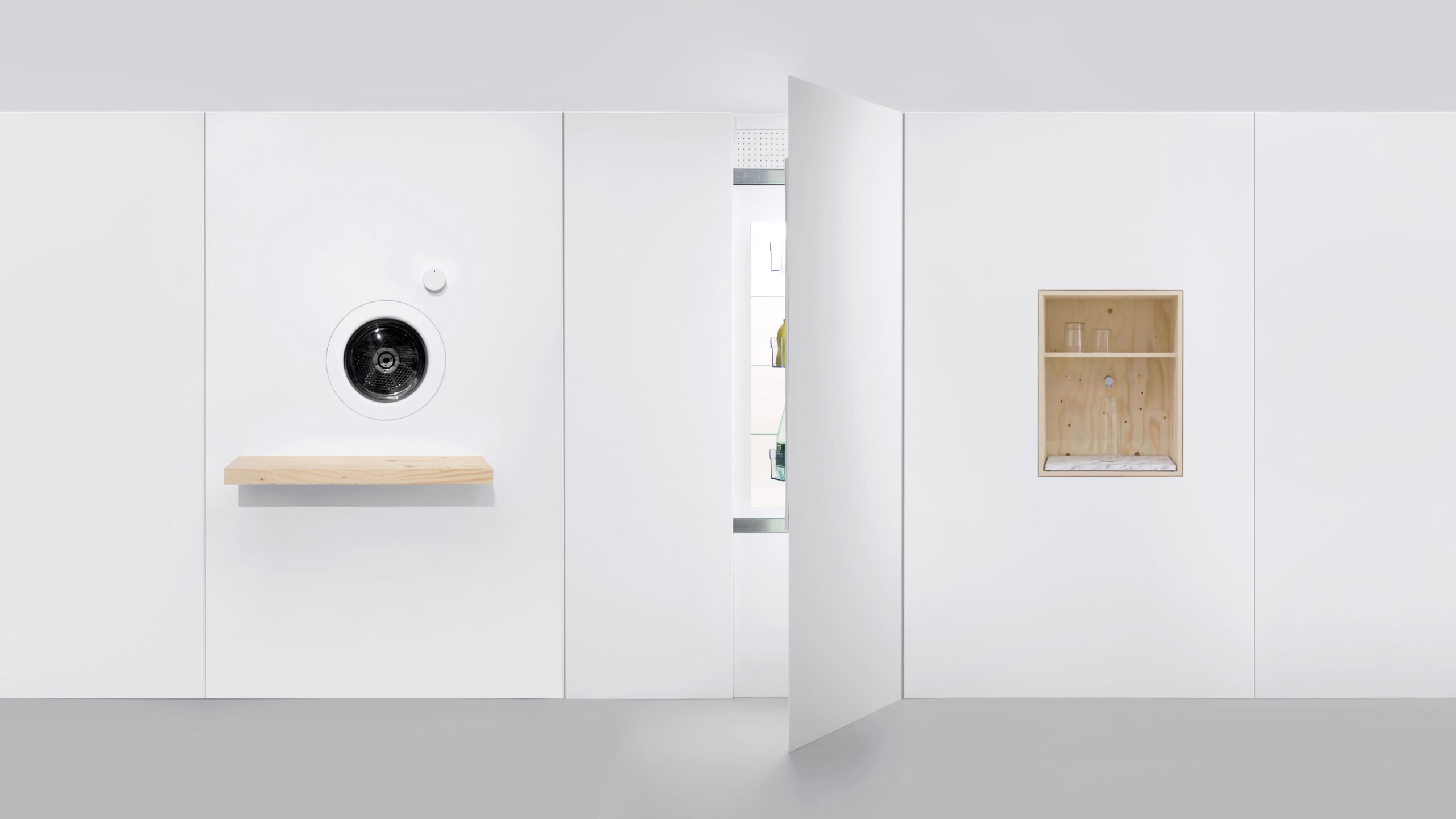
March 15, 2017
Amazin Apartments: How The Internet of Things Will Alter Our Homes
A speculative installation from U.K. design firm Future Facility uses the idea of consumption via smart systems to make home life easier for the elderly.
In December 2016, Amazon Go was introduced to the world with a video that quickly went viral: A man walks into a grocery store, picks up a sandwich, and simply walks out, paying via his phone. Aside from the promise of “No lines, no checkout,” the arrival of the first Amazon Go store in Seattle later this year represents a striking development in the role technology companies play in our lives. They’re no longer service providers connecting disparate consumers and products. The new store brings Amazon into quotidian omnipresence as both a retail environment and local infrastructure that will redefine our relationship to both the mundane act of picking up groceries and the experience of shopping online.
“Contemporary society is searching for ways to maintain face-to-face interaction as we increasingly rely on digital transactions,” says Kim Colin, who, along with Sam Hecht, constitutes technological design firm Future Facility—a new branch of the duo’s renowned Industrial Facility office, created to specifically address the Internet of Things economy. The office’s new speculative project Amazin Apartments draws inspiration from the changing role of technology in our lives, framing a fictional tech company as a property developer–cum–architect. Following the concepts of smart cities and Amazon Go’s smart store, Amazin Apartments proposes a natural progression of that idea into consumption via smart systems integrated directly into the home.

Crucially, this domestic simplification is targeted at elderly populations, a demographic that has the most to gain from the promise of a streamlined existence yet is often overlooked in the design industry. For Colin, this development could have a liberating effect for the elderly: “We would hope that by freeing the population from things that should not take up so much time—researching a washing machine, going to see it in a shop, waiting for the installer, troubleshooting inevitable problems, maintaining/servicing it, etc.—there is time to do something better with ourselves, including to have more time to contribute to society in valuable ways.”
Part of the recent NEW OLD exhibition at London’s Design Museum, Amazin Apartments is a modular system that supports housing for the elderly, displayed in the museum as a single wall sample. On one side of the wall is the apartment interior with a washing machine, a fridge, and tap units in a style typical of Hecht and Colin’s indus-
trial design work: sleekly minimal yet tactile and functional. The washing machine, for example, is exceptionally simple to operate, with just a single knob.
On the opposite side of the wall, in what is called the Amazin Service Corridor, LCD screens display an operational live feed of the appliances in a color-coded unit. From here, “Amazin staff” would replenish the refrigerator, top up the laundry detergent and water, and deal with malfunctions without entering the apartments, leaving residents free of the worry of maintenance and upkeep. The catch? Data is harvested by the company that owns and manages the apartment building to improve quality and increase revenue for itself.
NEW OLD is the first pop-up exhibition at the recently refurbished Design Museum, and it seeks to explore how contemporary design will shape the lives of “our future selves”—in other words, how the digital era will manifest itself in the lives of an aging Western population. While much of the exhibition is filled with clever practical solutions for the struggles of growing old, Amazin Apartments is unique in its critical engagement with the changing social position of elderly people in the digital age. At the core of this project is a fundamental tension between access to a comfortable life and the exploitation of personal data produced through smart technologies. As Colin says, “Giving away data is a small price to pay for the benefits of having to worry less about how to maintain an easier life. To trade data for good management seems a fair equation for the elderly.”
The speculative nature of this project means that Hecht and Colin are both wary of and inquisitive about the potential benefits and pitfalls of this exchange. More “provocation” than prediction, Amazin Apartments allows Future Facility to engage critically with technology, aging populations, and domestic environments. While this critical perspective isn’t always clear from the built installation itself, the duo’s acknowledgment of the controversial elements of the project in its accompanying texts does position Amazin Apartments as a refreshingly ambivalent take on the future. This is in contrast to a tech-fetishizing design field all too ready to proclaim the unparalleled benefits of all tech, all the time.

In a lecture at the museum, Hecht made a case for “appropriate progress,” ensuring that the usability of a product is not compromised by arbitrary embellishments included for their own sake. As with Industrial Facility’s more orthodox product design projects for Muji, Herman Miller, and others, the intuitive design of the apartment-side interfaces gives Amazin Apartments a practicality that goes some way toward balancing its data-sharing compromise.
While the complications of data exploitation remain ambiguous at best, the project’s simple interfaces, the warehouse practicality of the service side, and the noble aim of facilitating domestic dignity for the elderly are significant pluses. More important, it fulfills its speculative aim by posing more questions than it answers. As we live longer with the technology of the digital age, it is increasingly important that we be smarter, more inquisitive citizens in the smart cities and systems we inhabit.
Recent Viewpoints
Viewpoints
Navigating the Path to Net Zero






